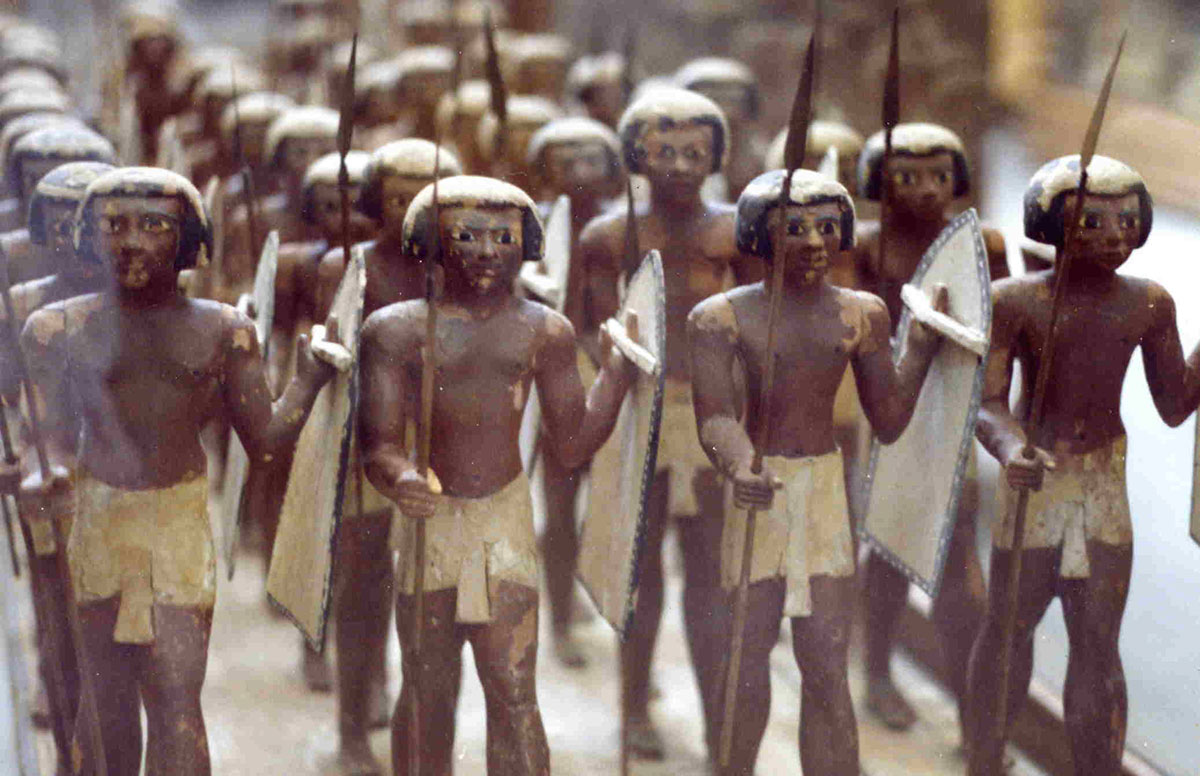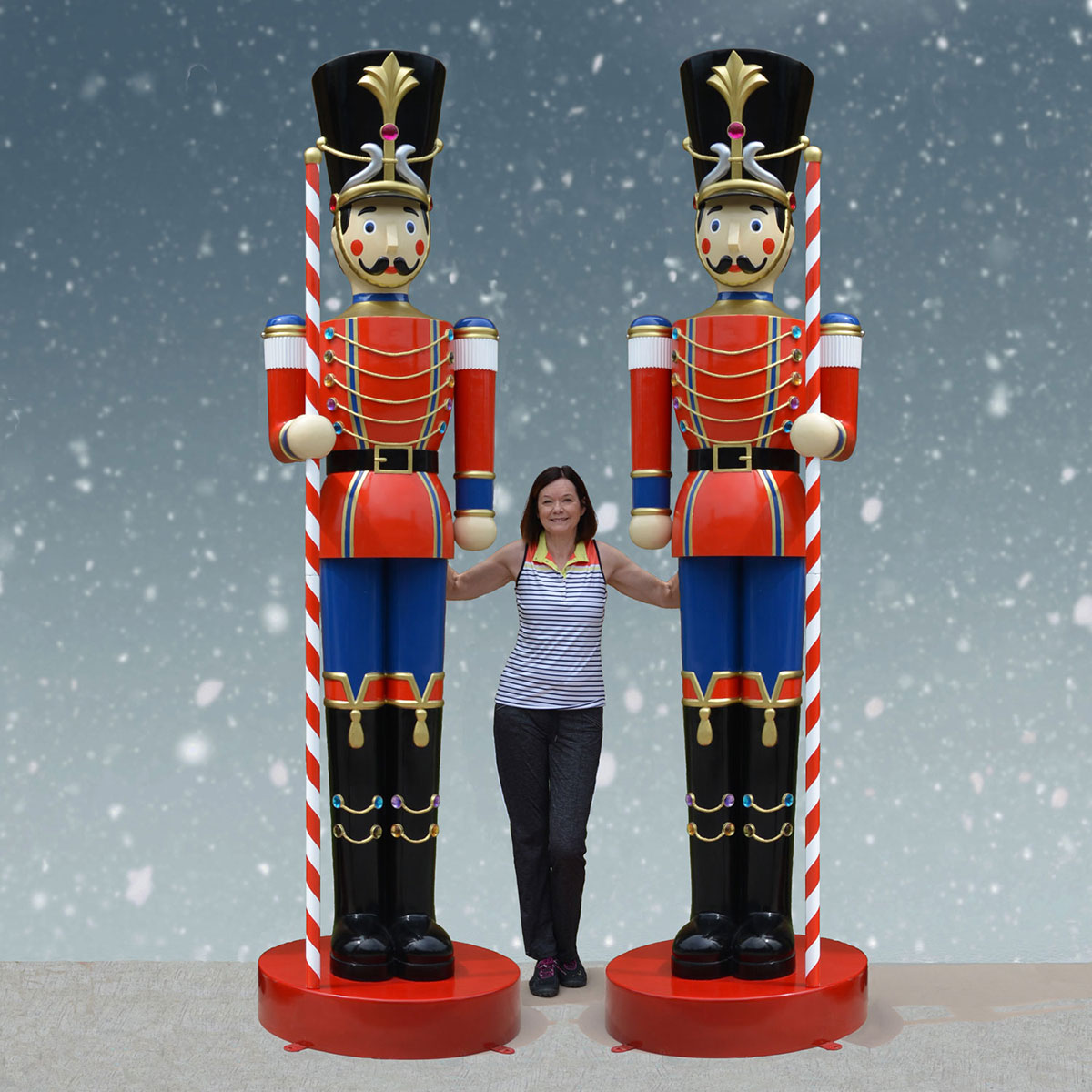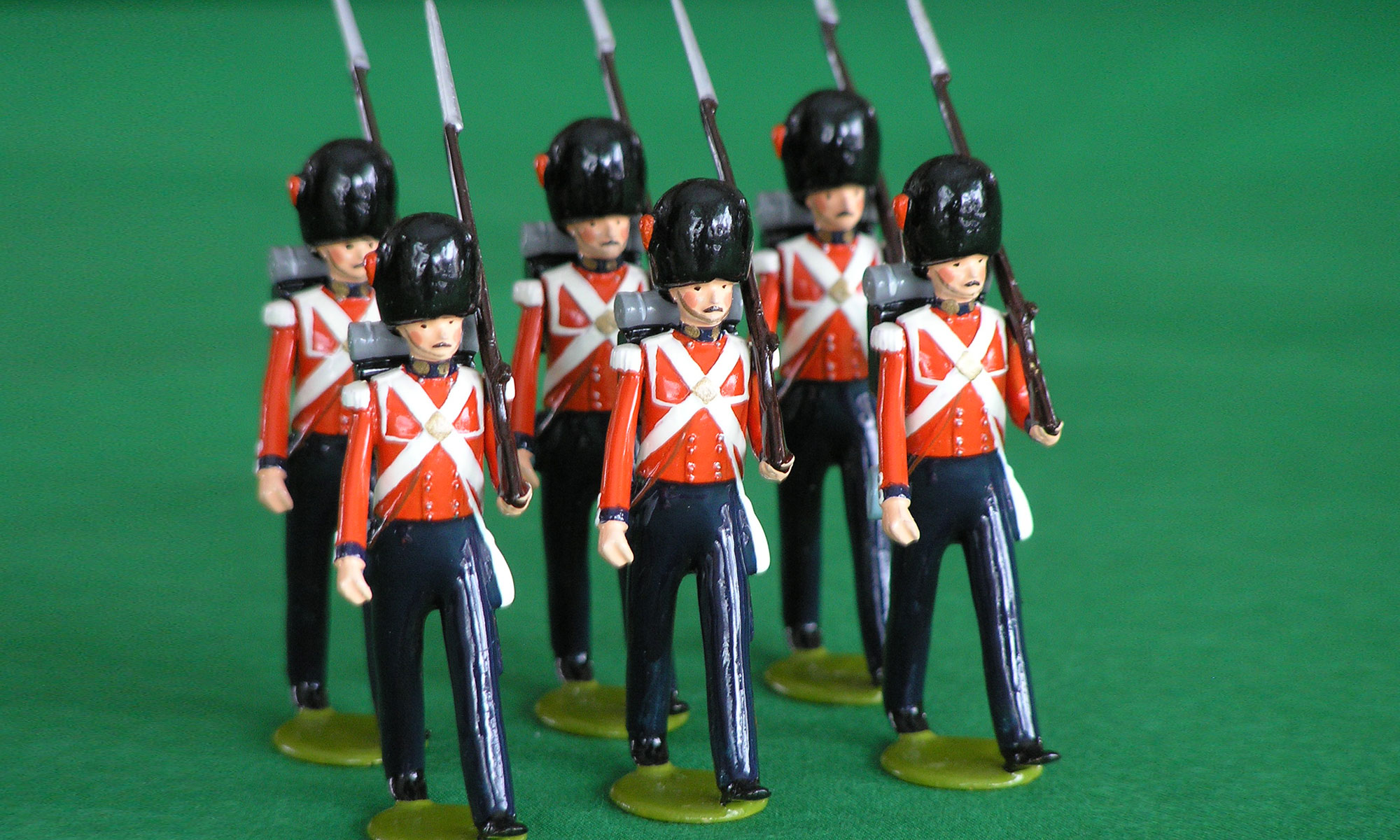Hear them all cheering,
Now they are nearing,
There’s the captain stiff as starch.
Bayonets flashing,
Music is crashing,
As the wooden soldiers march;
Sabers a-clinking,
Soldiers a-winking,
At each pretty little maid…
Here they come! Here they come!
Here they come! Here they come!
Wooden soldiers on parade.
— English song lyrics by Ballard MacDonald
for “The Parade of the Wooden Soldiers”
People “of a certain age” (and by that we mean ones who are old) and with good memories can pinpoint the exact moment and surrounding circumstances signaling the official start of the holiday season that stretches from Thanksgiving to Christmas. These clues could be visual in nature, such as the sudden appearance of life-size Nativity scenes on church lawns, colorful Christmas lights adorning trees and lamp posts, or giant toy soldiers keeping guard in front of decorated homes. Or the clues could be olfactory: the smell of a turkey roasting in the oven, the aroma of eggnog, and the fragrance of cinnamon and gingerbread permeating the house. They could be auditory as well, with sleighbells ringing and carolers singing. All of these sensations elicit the sweet, nostalgic feelings most people experience at Christmastime.
But for some older grownups, the one sure sign in yesteryear that the holiday season had officially started would be the annual broadcast of the 1934 Laurel & Hardy feature film, Babes in Toyland. In the pre-cable era, this film became a popular holiday staple, broadcast repeatedly throughout the 1960s and 1970s on numerous TV stations across the United States during the Thanksgiving/Christmas holiday season. In the U.S., it was often shown under an alternate title: March of the Wooden Soldiers.
Many young fans of the comic duo always looked forward to this annual showing of Babes in Toyland—not only because it was fun to watch (the stop-action animated toy soldiers were a hoot, but Stan Laurel always stole the show), but because it had become a tradition that meant Christmas was just around the corner.
Based loosely on Victor Herbert’s popular 1903 operetta of the same name, the film features many of the characters and songs in the original play, though the comedic movie plot diverges radically from the staged version. Without divulging the full plot, suffice it to say that the two comedians save the day at the end when they activate an entire army of giant mechanical soldiers (hence the alternate title, March of the Wooden Soldiers) to thwart the evil Barnaby and his mob of monstrous Bogeymen.
Giant Toy Soldiers Everywhere!
Watching the above scene, most people would be reminded that giant toy soldiers seem to figure a lot in Christmas symbology. For example, an instrumental musical piece composed in 1897 by German composer Leon Jessel, titled “The Parade of the Tin Soldiers” (or sometimes “The Parade of the Wooden Soldiers”), has also become a Christmas staple. The piece has been popular in the U.S. since the 1920s for marching bands, concert bands, and small orchestras. A version with lyrics by Ballard MacDonald was created in 1922 and has been performed and recorded numerous times since then. Here is Harry Connick, Jr. singing it on his 1993 album, When My Heart Finds Christmas. As soon as you listen to the first few bars, you’ll recognize the tune.
And of course the most iconic and familiar of the giant toy soldiers that appear during the holiday season are those found in that most Christmassy of stage productions, Tchaikovsky’s Nutcracker Suite ballet. In Clara’s dream, an army of toy soldiers comes to life (much like Laurel & Hardy’s) to aid the Nutcracker in his battle against the King of the Mice. It is a well-organized army made up of four different ranks: officers, infantry, artillery, and cavalry. Both their brilliant choreography and their bright costume uniforms illuminate their distinctive ranks.
And for years, the Rockettes have staged an annual Christmas Spectacular at Radio City Music Hall that includes a highly entertaining Toy Soldier routine:
But…Why Giant Toy Soldiers?
Compare and contrast the peacefulness of a Nativity Crêche with the violence and mayhem that often accompany an army of soldiers. How did those two contradictory concepts become associated under the same holiday?
Well, for one thing, the soldiers we are talking about are toys, after all—even if they are giant and, perhaps, a little intimidating: nothing to be afraid of (unless you are a Bogeyman or a regiment of mice!). As far back as ancient Egyptian times, toy soldiers have been a favorite plaything of small children.

But these toy soldiers were buried in an Egyptian tomb, which means they probably weren’t toys at all. Rather, they had a symbolic, ritualistic purpose, such as to accompany the deceased on their journey to the afterlife.
And that is the best way to think of giant toy soldiers when used as part of a Christmas display: not as militaristic objects, but rather as guardians and protectors of the home, of innocence, and of the Christmas spirit—just like the Nutcracker’s army or Laurel & Hardy’s mechanical toys. They should make you feel safe, and remind you of every performance of Nutcracker Suite you’ve ever seen or heard. And THAT makes for a very merry Christmas!



